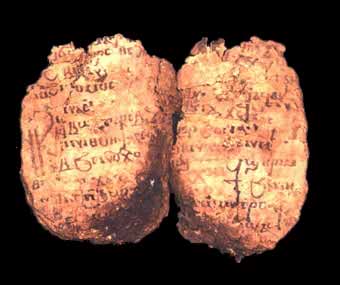Coptic Papyrus Codex, 300 CE - 500 CE
Papyrus
PF.0336
The term 'Copt' originally referred to the native Egyptians, as opposed to the Greek or Arab invaders. While later 'Copt' became a religious designation referring to Christian Egyptians, the Coptic...
The term "Copt" originally referred to the native Egyptians, as opposed to the Greek or Arab invaders. While later "Copt" became a religious designation referring to Christian Egyptians, the Coptic period is defined as the first millennium of the Christian era, when Christianity thrived in Egypt. The style of Coptic art evolved from the late antique art of Egypt, retaining Greek and Roman influences. Economic conditions doubtless played a major role in the emergence of a freer, more popular style of art; the lack of an extensive patronage system is evident in many aspects of Coptic art, the emphasis on more personal, less monumental art, the avoidance of costly materials, and the dearth of skilled craftsmen with extensive training among them. The stylistic tendencies of Coptic art move away from a naturalistic rendering of the human form and features. Outline and detail are simplified, and the number of motifs is limited.
As a written language, Coptic was derived mainly from the Greek alphabet with seven additional characters from Demotic (the common language of the Ancient Egyptians) to account for sounds in the language not present in Greek. Coptic codices and their contemporary counterparts written in Greek (which was the language of scholars and the elite classes in Alexandrian Egypt) represent some of the earliest sources of the Bible. A variety of regional dialects are recorded in the papyrus manuscripts that allow modern scholar to pinpoint the origins of certain texts. This astounding papyrus codex is written in the Coptic language. If translated, the text would likely refer to one of the books of the New Testament.
As a written language, Coptic was derived mainly from the Greek alphabet with seven additional characters from Demotic (the common language of the Ancient Egyptians) to account for sounds in the language not present in Greek. Coptic codices and their contemporary counterparts written in Greek (which was the language of scholars and the elite classes in Alexandrian Egypt) represent some of the earliest sources of the Bible. A variety of regional dialects are recorded in the papyrus manuscripts that allow modern scholar to pinpoint the origins of certain texts. This astounding papyrus codex is written in the Coptic language. If translated, the text would likely refer to one of the books of the New Testament.
Literature
V1



